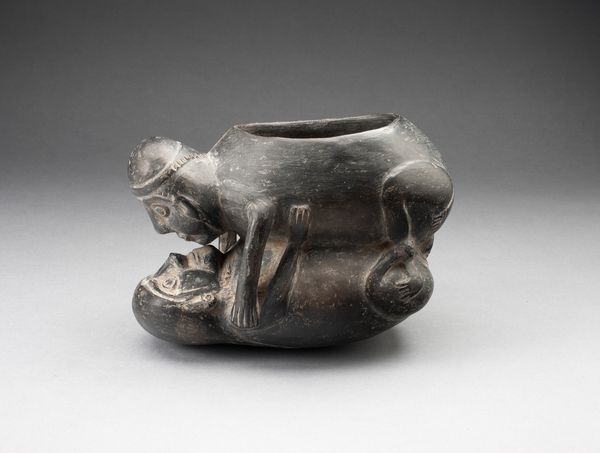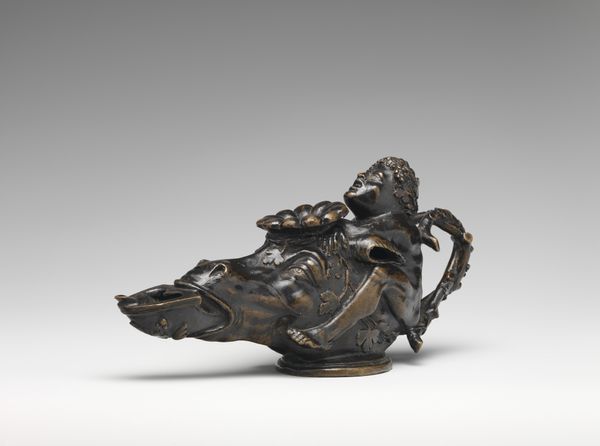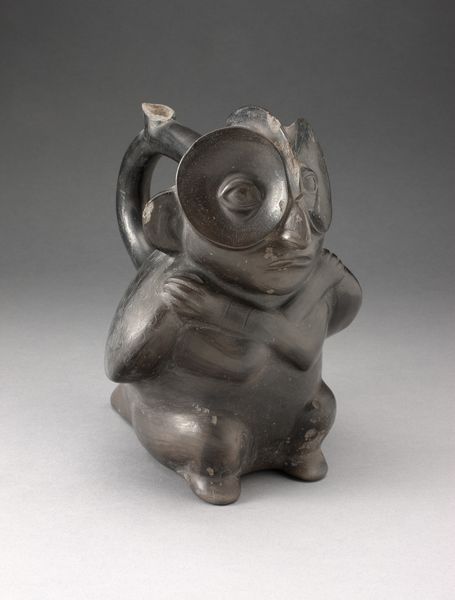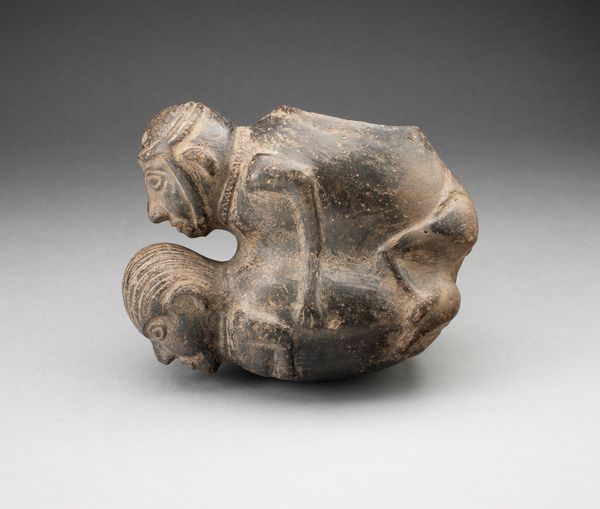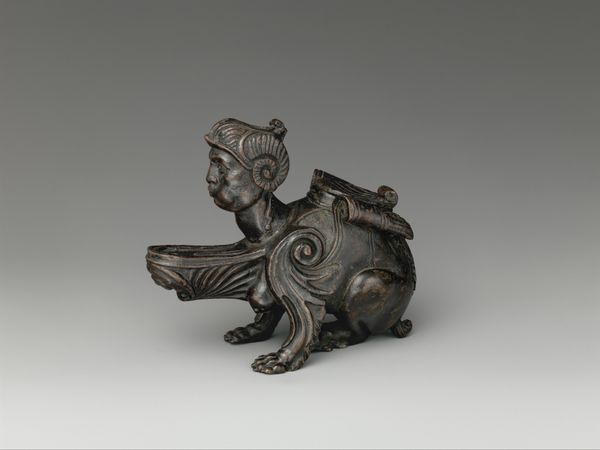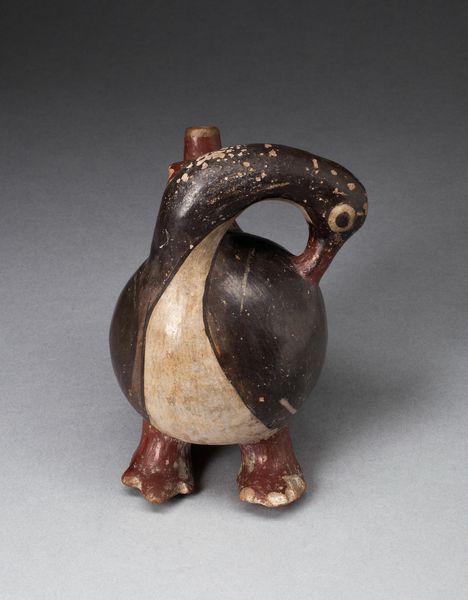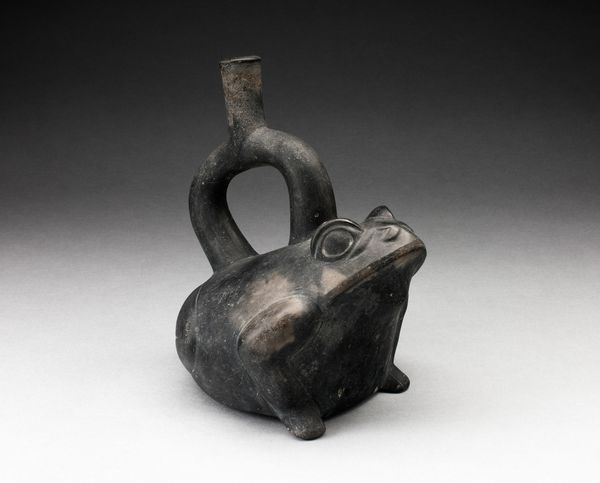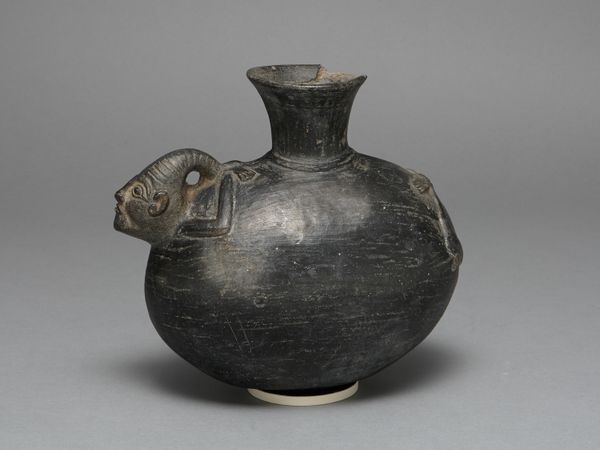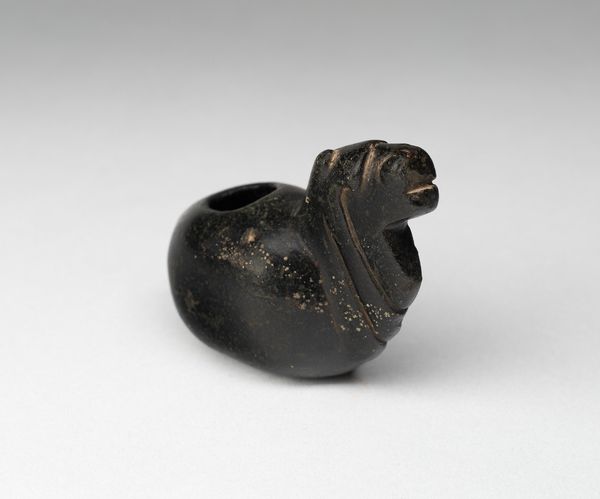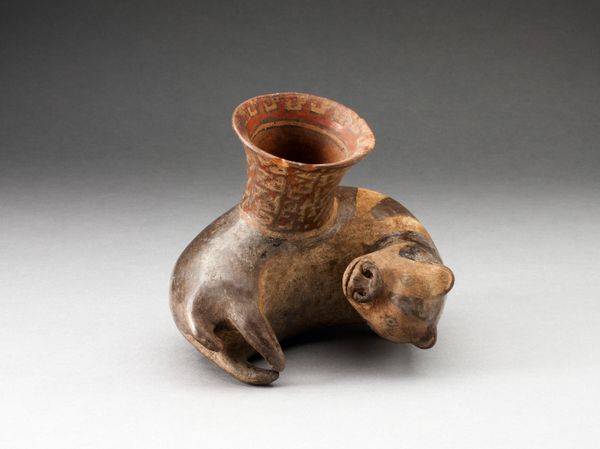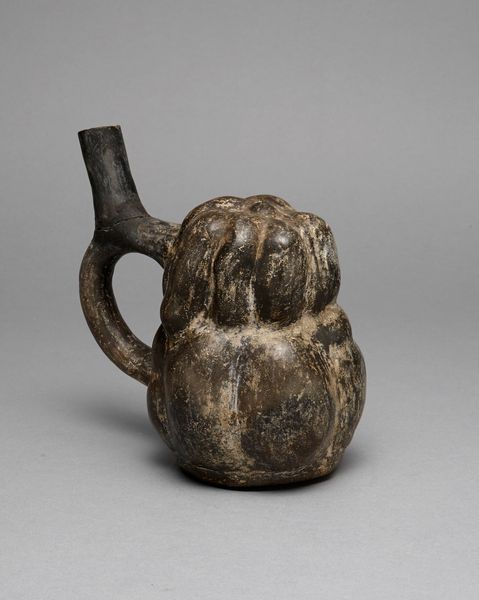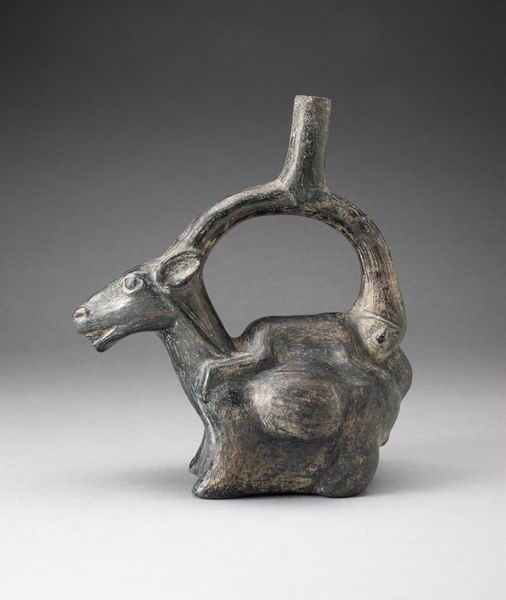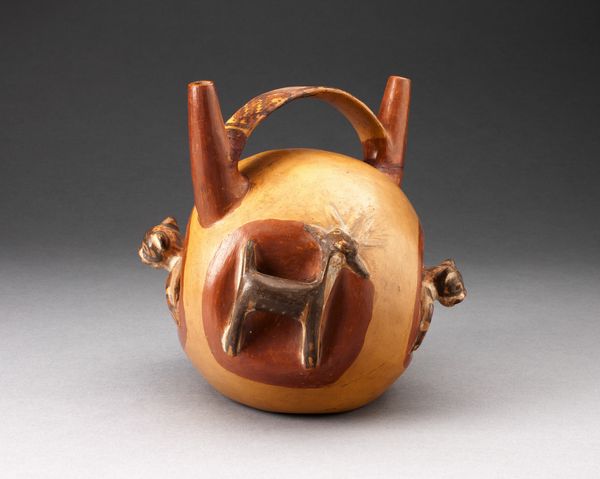
Oil lamp in the form of a grotesque animal 17th century
0:00
0:00
bronze, sculpture
#
animal
#
bronze
#
mannerism
#
figuration
#
11_renaissance
#
sculpture
#
decorative-art
Dimensions: Overall: 2 × 1 3/4 × 5 3/4 in. (5.1 × 4.5 × 14.6 cm)
Copyright: Public Domain
Curator: Let's turn our attention to this intriguing object: a 17th-century bronze oil lamp crafted in the form of a grotesque animal, currently residing at the Metropolitan Museum of Art. Andrea Briosco, also known as Riccio, is credited as the creator. Editor: My first thought is how bizarrely endearing it is. It’s chunky, kind of ungainly, and the way the head stretches out into the lamp… It's unexpected, almost comical, despite being made of bronze. Curator: Comical perhaps, but within the context of its time, these grotesque figures were quite popular. Mannerism embraced the strange and unconventional, often incorporating animalistic and monstrous forms into functional objects and decorative art. Editor: And I wonder about its place within the household. Was it purely decorative, a status symbol to display wealth, or did it serve a more utilitarian function for everyone? Considering the visual language of monstrosity, I wonder if this imagery was trying to ward off evil spirits, making it a symbol of protection rather than mere aesthetics. Curator: It’s highly likely it served both functions, reflecting the period’s relationship with ornamentation and symbolic messaging. The prominent display of such items signaled status. Further study is needed into how art institutions validate what artifacts hold value for contemporary culture, as opposed to acknowledging a broad, less privileged audience that these commodities never catered for. Editor: Exactly. It's vital to not just interpret the symbolism and function, but also how these objects contributed to reinforcing power dynamics within the societal hierarchy. It reminds me of how decorative arts often gets sidelined when looking at social inequalities. Curator: Precisely! Reflecting on it, the 'grotesque' descriptor also invites conversation about marginalized figures whose existence has been caricatured as “other than human,” "strange," and ultimately, devalued throughout history, like how systemic inequalities still plague contemporary artists of marginalized social categories in getting equal opportunity to have their voices heard. Editor: Indeed. The power of material objects in visualizing identity is just one avenue to reflect on and deconstruct social politics, past and present. Curator: Thank you, these objects are a valuable way to learn how material things, institutions, and ideology work together. Editor: Thank you! The nuances in design of such works give a crucial understanding into social-historical underpinnings, both then and now.
Comments
No comments
Be the first to comment and join the conversation on the ultimate creative platform.
